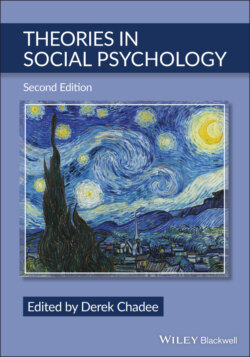Читать книгу Theories in Social Psychology - Группа авторов - Страница 12
Threat
ОглавлениеA threat emerges from any power or force that attempts to reduce or eliminate the expression of a specific freedom (Brehm & Brehm, 1981). Threats can be explicit or implicit (i.e., subtle by implication). Brehm and Brehm (1981) describe threats to freedom as either external or internal. Internal threats arise out of choices and decisions we make from alternatives, accepting and rejecting among options. On the other hand, external threats have two dimensions – impersonal versus personal and social versus nonsocial. Impersonal threats are not easily perceived, unlike personal threats in which motives and intentions of threats can be identified and have implications for the perception of future threats. Specifically, personal threats will carry more significant consequences for future threats from the same source because of possible future interaction. Impersonal threats, however, create less reactance arousal since they are not directly focused on the individual, and therefore no implications for future threats. However, the term personal, as Brehm and Brehm (1981) indicate, not only refers to interaction with known others but can apply to infrequent interaction with an unfamiliar entity/person.
Impersonal threats can also be derived from persons or institutions that we interact with on a personal level, for example, working for a large corporation or governmental organization. An impersonal threat from such an organization is not directed toward a specific individual, but any threat to freedom would have consequences to individuals in the organization. The depth of future interaction with a threatening source is an important prediction of psychological reactance. Brehm and Brehm (1981) postulate that anticipation of future interaction with a threatening source is likely to increase psychological reactance compared to anticipation that there will be minimal or no future interaction with a threatened source.
Another dimension of threat that Brehm and Brehm (1981) identify is the social versus nonsocial dimension. However, they also postulate that nonsocial exists in degrees, since humans are social and reactance emerges from social interaction, and there will be social interpretations of nonsocial dimensions. The source of threat can emanate from either level. Studies that consider the social dimension expose participants to a socially threatening situation (e.g., one individual directly threatens the freedom of another). The non-social studies created threats via nonsocial interaction (e.g., barriers to toys, removal of choice alternatives).
